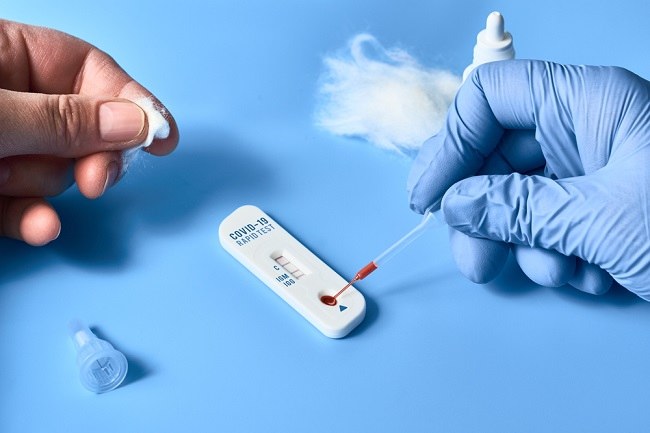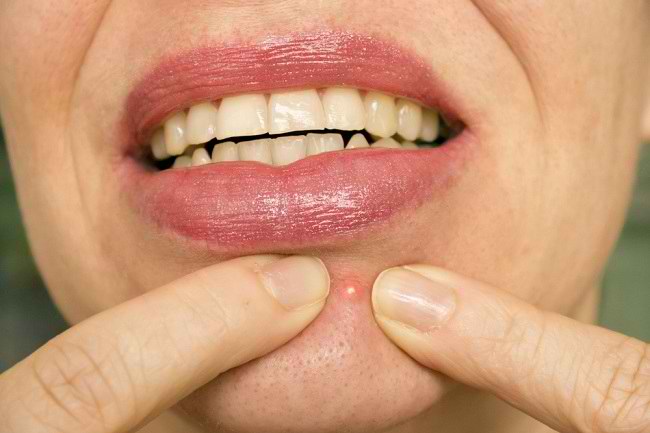Reactive arthritis, also known as Reiter's syndrome, is a joint inflammation that is triggered by infection, especially infections caused by sexually transmitted diseases or food poisoning. However, this disease is not contagious.
Reactive arthritis causes the joints in the knees, ankles, or feet to become swollen, painful, red, and warm to the touch. This condition can come and go, but tends to disappear within 6-12 months.

Reiter's syndrome is a rare condition. The incidence ratio is only about a dozen cases per 100,000 people. This condition is more common in men and people between the ages of 20-40 years.
Causes of Reactive Arthritis
The exact cause of reactive arthritis is still unknown. Even so, most of these disorders occur as a reaction to infections in the body, especially infections of the gastrointestinal tract, urinary tract, or genital organs.
These infections are generally caused by the following bacteria:
- Bacteria that cause sexually transmitted diseases, such as: Chlamydia trachomatis and Ureaplasma urealyticum.
- Bacteria that cause food contamination, such as Shigella, Salmonella, Yersinia, Campylobacter, and Clostridium difficile.
However, not all patients affected by the above bacterial infections will have reactive arthritis. This disorder is more common in patients who also have a number of risk factors, such as having the HLA-B27 gene, being male, and being between the ages of 20-40 years.
Symptoms of Reactive Arthritis
Symptoms of reactive arthritis generally occur 1-4 weeks after infection. The main symptom of this disorder is pain, stiffness, and swelling in the joints, especially the joints in the knees, ankles, feet, and hips.
Not only that, other joints, such as heels, waist, and buttocks, can also experience the same thing. In addition, arthritis can also attack the fingers and toes, muscles, and tendons.
In addition to attacking the joints, Reiter's syndrome can also affect the urinary tract and genital organs, eye area, and skin. Symptoms that appear in each patient are different, depending on the location of the infection.
Symptoms of reactive arthritis of the urinary tract can include:
- Increased frequency of urination and pain.
- Discharge from the penis or vagina.
Symptoms of reactive arthritis in the eye area can include:
- Eyes are red and painful.
- Vision becomes blurry.
Symptoms of reactive arthritis in the skin area can include:
- A rash appears on the skin.
- The surface of the skin appears red, thickened, and feels rough.
The above symptoms can come and go and can last anywhere from 3 to 12 months. In a minority of patients, this disorder can become a chronic disease.
When to go to the doctor
A person needs to consult a doctor if they experience symptoms of reactive arthritis. Especially if these symptoms appear shortly after experiencing a gastrointestinal infection or urinary tract infection, which is generally characterized by diarrhea or pain when urinating.
Even after treatment, reactive arthritis can recur at a later date. So, people who have suffered from this disease are advised to regularly consult a doctor so that their condition is always monitored.
Diagnosis of Reactive Arthritis
The doctor will ask about the complaints and symptoms experienced by the patient, as well as trace the history of the disease that the patient and his family have suffered. After that, the doctor performs a physical examination of the patient's joints, eyes, and skin, especially if these areas experience pain, inflammation, swelling, or a rash.
If there is a suspicion that the patient has reactive arthritis, the doctor will perform the following supporting tests:
blood test
This test aims to detect infection, signs of inflammation in the body, to the HLA-B27 gene, which is generally owned by people with reactive arthritis.
Urine and stool test
This test aims to confirm the presence of infection, which can be a trigger for reactive arthritis.
Joint fluid test
The doctor will take fluid from the joint that feels sore. This joint fluid is needed to test for the presence of inflammation and infection in the joint.
X-ray photo
X-ray scans can be done to assess the severity of the inflammation. This step is generally performed when the patient has recurrent reactive arthritis symptoms.
Reactive Arthritis Treatment
Reactive arthritis treatment aims to relieve symptoms so that patients can return to their normal activities. The choice of treatment method will be adjusted to the cause, severity, age, to the patient's overall health condition. Here's the explanation:
Self-medication
Patients can carry out initial treatment independently to relieve pain by limiting movement, resting, to cold compresses, problematic joints.
However, this self-management is only temporary. After self-medication, it is still necessary to see a doctor.
Drugs
The doctor will give antibiotics to treat bacterial infections. Then, non-steroidal anti-inflammatory drugs (NSAIDs), such as diclofenac or ibuprofen, are also given to relieve joint pain and inflammation.
However, if NSAIDs do not work, anti-inflammatory drugs from the corticosteroid class will be given. Administration of the drug can be done by injecting it into the affected joint or orally (taken by mouth).
If corticosteroids also do not help relieve the patient's symptoms, drugs to suppress the immune system (DMARDs), such as methotrexate or sulfasalazine, will be given by a doctor.
In addition to antibiotics and joint pain relievers, the doctor may prescribe topical corticosteroids if the patient also has a skin rash or eye drops or ointment, if the patient also has conjunctivitis.
Physiotherapy
Doing physiotherapy regularly for a certain time can be done to restore the ability to move the joints and the area around them.
Furthermore, the doctor will also advise the patient to exercise regularly to maintain the strength and flexibility of the joints and muscles. The types of exercise that are generally recommended for arthritis sufferers are cycling or yoga.
The success of reactive arthritis treatment varies widely. Most sufferers improve within 3-4 months, but about 50% of them experience this disorder again a few years later.
Complications of Reactive Arthritis
There are several complications that can arise from reactive arthritis, including:
- Inflammation of the heart muscle
- Inflammation and hardening of the spine
- Glaucoma
- Foot deformity
- Accumulation of fluid in the lungs
Reactive Arthritis Prevention
Prevention of reactive arthritis can be done by avoiding the triggers of this condition, namely sexually transmitted infections and gastrointestinal infections. This can be done in several ways:
- Use condoms during sex and do not change sexual partners.
- Ensure the cleanliness of the food and beverages consumed by paying attention to the process of storage, processing, and presentation.
- Carry out regular health checks according to doctor's recommendations, so that diseases can be detected early and treated immediately.









